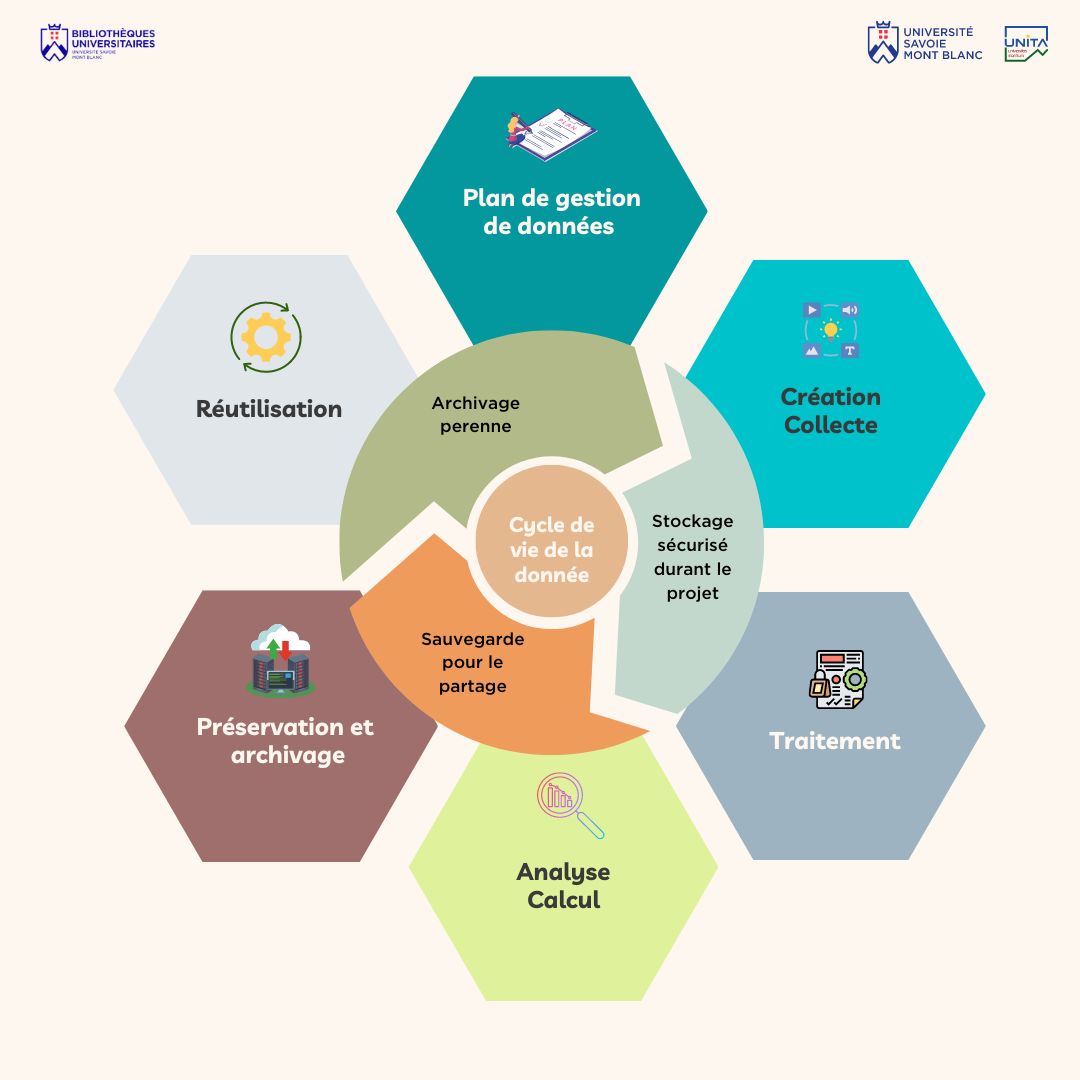With the rise of open science, and in particular after the publication of the Second National Plan for Open Science, research data are now at the heart of the academic community's concerns. For this reason, researchers and laboratories are looking at how to manage their data. Like an article, research data is intended to be shared, cited and reused.
- But what is search data?
In 2007,INIST (Institut de l'Information Scientifique et Technique) defined research data as "factual records (figures, texts, images and sounds), which are used as primary sources for scientific research and are generally recognized by the scientific community as necessary to validate research results".
- What is not included in the definition of research data?
Preliminary analyses, programs for future work, peer reviews, personal communications (e.g. e-mails), physical objects, academics media, administrative data.
The aim of the FAIR principles is to promote the discovery, access, interoperability and reuse of shared data. Each FAIR principle is broken down into a set of characteristics that data and metadata must have to facilitate their discovery and use by humans and machines alike. The four main principles :
- Easy to find
The aim of the Easy-to-find principle is to make it easier for humans and IT systems to find data, thanks in particular to a metadata standard and durable identifiers (e.g. DOIs).
- Accessible
The Accessible principle makes it easy to access and download data. It encourages long-term storage of data and metadata, and facilitates access and/or downloading by specifying the conditions of access (open or restricted) and use (license).
- Interoperable
The Interoperable principle aims to exploit data regardless of the computing environment used. It can be broken down into: downloadable, usable, intelligible and combinable with other data, by humans and machines.
- Reusable
The Reusable principle aims to reuse data for future research, and highlights the characteristics that make data reusable for future research or other purposes (teaching, innovation, reproduction/transparency of science).
Interactive visualization of the 4 FAIR principles proposed by the DoRANum service platform:
https://view.genial.ly/5d64fbbd8352350fa3d22603/interactive-content-les-principes-fair
A Data Management Plan (DMP ) is an essential document that describes how research data will be collected, organized, stored, shared and preserved throughout and after the completion of a research project. It guarantees rigorous management of data, thus promoting its reuse and durability.
In the early stages of your project, it is useful because it enables you to ask yourself the right questions at each stage of your data lifecycle. It's a living document that can be updated throughout your project.
- Why is a SMP important?
Compliance with requirements: More and more funding bodies, such as the ANR or the European Union through Horizon 2020, require the creation of a DMP to ensure that the data resulting from the research they fund is properly managed.
Facilitating sharing and reuse: A DMP promotes transparency and encourages the reuse of data by other researchers, thus contributing to the advancement of scientific research.
Data preservation: By defining clear protocols for storage and backup, the DMP helps preserve data over the long term, reducing the risk of information loss or corruption.
- What's in a Data Management Plan?
A SMP generally includes the following elements:
Data description: Type of data collected, format, estimated volume, etc.
Data collection and processing: Collection methods, verification procedures and quality control.
Storage and backup: data location, backup frequency, secure access, etc.
Sharing and access: Sharing methods (e.g. repositories), anonymization, access restrictions.
Long-term retention: Length of data retention, plan for format migration if necessary, etc.
- How do you draw up a SMP?
At BU, we support you in the creation of your Data Management Plan with tools and advice tailored to your research project. You can use the DMP templates available online (as in DMPOpidor) and consult us for any questions you may have about data management.
